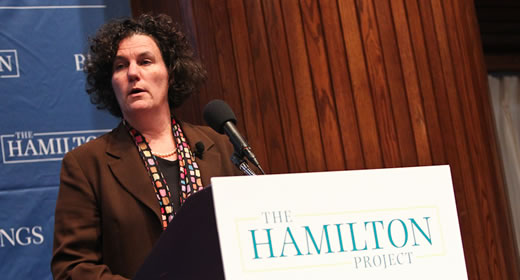
Susan Dynarski considers the effects of student loan interest rates in “What does cutting rates on student loans do?” The piece appears in Evidence Speaks, a weekly publication of the Brookings Institution's Center on Children and Families.
Dynarski argues that lowering loan interest rates is a “blunt, ineffective and expensive tool” to reduce loan default and boost college enrollment, pointing out that interest subsidies benefit every borrower, even high-earners who face no difficulty repaying loans. Further, she points out that there is no evidence that student loan interest rates affect college enrollment.
“If we want to increase college-going by lowering its price, evidence shows that grants and lower tuition are the right policy tools, says Dynarski.
“If we want to reduce distress and default among student-loan borrowers, cutting interest rates is also the wrong policy. It does little for distressed borrowers while providing windfall gains to those having no trouble repaying their loans. A well-designed, income-based repayment plan allows borrowers to pay back their loans when and if they are able and is the best route to reducing default and distress.”
Dynarski's article was cited in the following additional sources:
- "The Argument Against Lowering Student Loan Interest Rates," published April 14 in Forbes
- "Why Lowering Interest Rates Won't Fix the Student-Debt Problem," published April 15 in The Atlantic
- "Clinton and Sanders Say Student Loan Rates Are Too High; Here's What's Going On," published April 15 in the Wall Street Journal's Washington Wire
Susan Dynarski is a professor of public policy at the Gerald R. Ford School of Public Policy, a professor of education at the University of Michigan's School of Education, and a professor of economics at the University of Michigan's College of Literature, Science, and the Arts. She is co-director of the Ford School’s Education Policy Initiative, which engages in applied, policy-relevant research designed to improve educational achievement and outcomes.